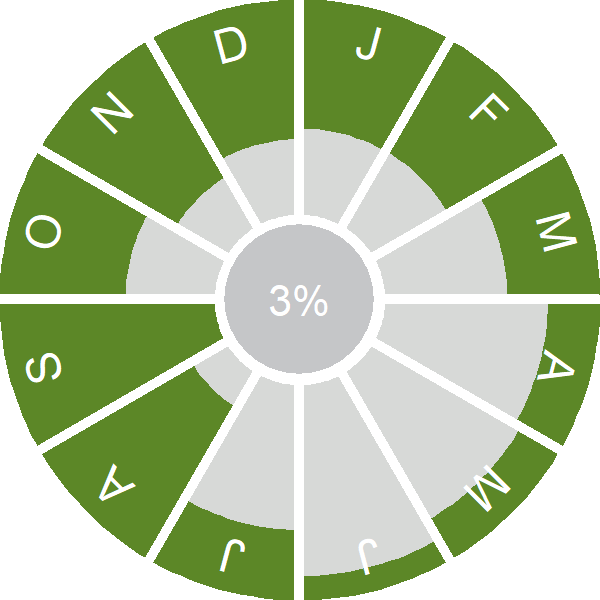Knot
Calidris canutus (Linnaeus, 1758)
KN
 KNOT.
KNOT.  4960
4960

Family: Charadriiformes > Scolopacidae

This medium-sized grey wader winters on our larger estuaries before returning to its Arctic breeding grounds.
Although the Knot’s winter plumage is uniformly pale grey, birds start gaining brick-red feathering in the spring as they depart for their breeding grounds. Early in the winter, juvenile birds can be identified by a ‘scalloped’ appearance – each feather has a black line near its edge.
Ringing data show that our wintering Knot come mostly from Iceland, Greenland and the Canadian Arctic. WeBS counts show that The Wash hosts the vast majority of this population, with mid-winter peak counts having increased to in the region of 200,000 birds. Watching their swirling flocks is a true wildlife spectacle.
Identification
Knot identification is sometimes difficult. The following article may help when identifying Knot.
Identifying Knot and Dunlin

Telling winter waders apart can be daunting. Success in this (and if you are keen to find rarer species) is not difficult, provided you are familiar with two key species: Knot and Dunlin. This guide tackles these two ‘confusing calidrids’, familiarity with these is essential in order to gain experience and confidence identifying the apparently bewildering range of waders on our coasts in autumn and winter.
- ‹ previous
- 2 of 2
SONGS AND CALLS
Listen to example recordings of the main vocalisations of Knot, provided by xeno-canto contributors.
Flight call
Call
Develop your bird ID skills with our training courses
Our interactive online courses are a great way to develop your bird identification skills, whether you're new to the hobby or a competent birder looking to hone your abilities.
Browse training coursesStatus and Trends
Population size and trends and patterns of distribution based on BTO surveys and atlases with data collected by BTO volunteers.
CONSERVATION STATUS
This species can be found on the following statutory and conservation listings and schedules.
POPULATION CHANGE
| UK winter population |
+1% increase (1996/97–2021/22)  |
DISTRIBUTION
Over 65% of Knots originating from Greenland and Canadian Arctic breeding grounds winter around the coasts of Britain & Ireland, favouring muddy and sandy shores, especially estuaries. They are generally absent from northern and western Scotland and from other stretches of rocky coastline.
Occupied 10-km squares in UK
| No. occupied in winter | 513 |
| % occupied in winter | 17 |
European Distribution Map
DISTRIBUTION CHANGE
The number of occupied 10-km squares has increased in Britain by 27% and in Ireland by 58% since the 1981–84 Winter Atlas, matching a population increase detected by the Wetland Bird Survey and Irish Wetland Bird Survey.
| % change in range in winter (1981–84 to 2007–11) | +25.9% |
SEASONALITY
Knots are mostly winter visitors, but with a pronounced passage in autumn as birds arrive from tundra breeding habitats.

Movement
Information about movement and migration based on online bird portals (e.g. BirdTrack), Ringing schemes and tracking studies.
RINGING RECOVERIES
View a summary of recoveries in the Online Ringing Report.
Foreign locations of birds ringed or recovered in Britain & Ireland

Biology
Lifecycle and body size information about Knot, including statistics on nesting, eggs and lifespan based on BTO ringing and nest recording data.
SURVIVAL & LONGEVITY
View number ringed each year in the Online Ringing Report
Maximum Age from Ringing 
|
27 years 3 months 29 days (set in 2006) 
|
Typical Lifespan 
|
8 years with breeding typically at 2 year |
Adult Survival 
|
0.841±0.066  
|
BIOMETRICS
Wing Length 
|
Adults | 169.4±6.2 | Range 159–179mm, N=3618 |
| Juveniles | 164.7±3.9 | Range 158-171mm, N=1589 |
Body Weight 
|
Adults | 138±20.2 | Range 120–158g, N=3564 |
| Juveniles | 131±14.7 | Range 107–156g, N=1540 |
Feather measurements and photos on featherbase 
CODES & CLASSIFICATION
Ring size 
|
C2 |
Field Codes 
|
2-letter: KN | 5-letter code: KNOT. | Euring: 4960 |
For information in another language (where available) click on a linked name
Research
Interpretation and scientific publications about Knot from BTO scientists.
PUBLICATIONS (2)

Consequences of population change for local abundance and site occupancy of wintering waterbirds
Wavering Waterbirds
Protected sites are assigned based on population statistics for vulnerable and endangered species. This new study using WeBS data shows that changes in population size can affect local abundance, and thus influence whether or not key targets are met for site protection.
Using stable isotope ratios to unravel shorebird migration and population mixing: a case study with the Red Knot Calidris canutus
Links to more studies from ConservationEvidence.com
Would you like to search for another species?












Share this page